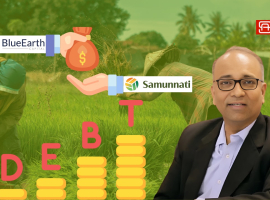Unveiling India’s $720+ Billion Consumer Lending Potential
Three points you will get to know in this article:
- The digital consumer lending market is projected to grow by 22% CAGR, tripling in size by 2030 due to positive socioeconomic factors and timely regulations.
- Startups in digital consumer lending secured over $2.8 Bn (86.3% of total funding) between 2014 and Q2 2023, with personal loans being the most popular (86.3%). Retail cards, buy now, pay later (BNPL), and gold loans accounted for the remaining funding.
- Analysts expect personal loans to grow faster than other consumer lending categories due to their diverse range of uses.
The digital consumer lending landscape in India is on track to exceed a remarkable $720 billion by 2030, making up a substantial 55% of the expansive $1.3 trillion-plus digital lending market within the nation.
With a robust compound annual growth rate (CAGR) of 22%, the digital consumer lending sector is set to nearly triple in size, fueled by a combination of favorable socio-economic conditions and well-timed regulatory interventions.
Over time, the enhanced availability of credit has been made possible by the widespread adoption of digital lending applications, simplified KYC validation processes, and streamlined repayment alternatives. This, in turn, has triggered a significant upswing in lending activities through digital channels.
India’s Digital Consumer Lending: Set to Surpass $720 Billion by 2030
In recent times, a burgeoning array of startups has graced the business landscape. Notable among them are industry leaders such as Rupeek, OneCard, Eduvanz Financing, Slicepay, Kissht, Cashe, LoanTap, Propelled, Early Salary, FlexMoney, MyShubhLife, and IndiaGold, among a host of others.
Yashoraj Tyagi, the CEO of the innovative digital consumer lending venture Cashe, highlights a noteworthy trend. Even within the realm of substantial credit products like auto loans, housing loans, and loans against property—traditionally entwined with cumbersome physical processes—a noteworthy digital transformation has occurred. Critical procedures, ranging from customer onboarding and verification to customer support and repayment mechanisms, have undergone significant digitization.
Presently, India proudly hosts a diverse spectrum of more than 100 digital consumer lending enterprises. These are neatly segmented into four primary sectors: personal loans, buy now pay later (BNPL), retail cards, and gold loans. This diverse landscape is not just a numerical statistic but a testament to the evolving nature of financial services. The sector’s metamorphosis signifies a user-friendly shift, providing consumers with a seamless experience. In essence, India’s financial technology landscape is witnessing a paradigm shift, and it’s more human-centric than ever.
Prominent Indian backers like Peak XV Partners, Blume Ventures, Accel, India Quotient, and others have thrown their weight behind these emerging enterprises.
In the consumer lending domain, Indian fintech startups have collectively secured over $3 billion in funding since 2014. Notably, the consumer lending sector witnessed substantial growth post-Covid, boasting a 73% Compound Annual Growth Rate (CAGR) from 2014 to 2022, surpassing the funding growth of B2B lending.
As highlighted by Vaas Bhaskar, Principal at Elevation Capital, an early-stage VC fund, there exists a potential audience of at least 300-400 million viable individuals when we exclude those with low incomes and credit scores. However, the formal channel is currently only catering to approximately 100-120 million, leaving a significant gap—four times what is currently addressed.
Personal Loans Gain Prominence
startups within the realm of personal loans have garnered an impressive 86.3%, surpassing $2.8 billion from the total digital consumer lending pool, which exceeds $3 billion and spans from 2014 to H1 2023. This dominance is followed by retail cards at 8.8%, buy now, pay later (BNPL) at 4.8%, and gold loans at a modest 0.2%.
Analysts foresee uniform growth across all consumer lending categories; however, personal loans are anticipated to outpace others, propelled by their extensive range of applications.
Moreover, the augmentation in the income of Indian households over the years has resulted in an upswing in personal loan disbursements across diverse segments. This encompasses short-term, low-ticket-size personal loans, as well as long-term, high-value personal loans.
This trajectory underscores the expanding landscape of personal loans in response to evolving consumer needs.
In CRIF’s latest report, it was revealed that a significant portion of personal loans distributed during the fiscal year 2022 fell below the INR 1 Lakh mark in terms of quantity. Interestingly, when considering the monetary value, the majority of personal loans extended were within the bracket of INR 5 Lakh to INR 10 Lakh. This underscores a noteworthy trend in the distribution of personal loans, reflecting diverse preferences among borrowers.
What’s driving the surge in consumer lending in India?
Fueling the expansion of the digital lending landscape are two pivotal factors: the surge in internet usage, now touching nearly 49% of the Indian populace, and the resilient digital infrastructure, embodied by the India Stack. This intricate framework encompasses vital elements like e-KYC, UPI, and account aggregator frameworks, collectively propelling a holistic metamorphosis in the digital lending realm.
Furthermore, there is a burgeoning recognition among regulators and policymakers that embracing the digital realm is the apt strategy for advancing financial inclusion. Substantial backing is being extended to cater to the growth requisites of this sector, as highlighted by Vishwanathan of RING.
The guidelines on digital lending offer essential regulatory insights for both regulated entities (REs) and Lending Service Providers (LSPs), resolving various uncertainties and ushering in a clear understanding of lending procedures. This not only reinforces thorough scrutiny and corporate governance on the startup’s part but also fosters a heightened sense of trust among investors.
Entering the Next Stage
Through the initiation of endeavors like the BharatNet Project and the Digital Saksharta Abhiyaan (DISHA) Program by the Indian government, coupled with the availability of various applications delivering services in local languages, digital lenders have experienced a substantial improvement in their capacity to engage with consumers nationwide.
Nevertheless, as highlighted by Tyagi from Cashe, the focus has shifted from the initial hurdle of customer acquisition to the current critical task of exercising judicious lending practices.
Moreover, it has become clear that the digital lending sector’s upcoming wave of expansion will primarily occur in Tier II cities and beyond. As a result, digital lending startups must develop robust business models capable of sustaining growth while adapting to required innovations. It is worth highlighting that considering India’s present digital literacy rate, integrating a hybrid model could be more advantageous for long-term success, despite the inherent viability of a purely digital approach. By combining the best of both worlds, these startups can effectively cater to the evolving needs of borrowers while navigating the challenges associated with a rapidly evolving market.
In addition, it cannot be overstated how crucial it is for digital lending entities to prioritize investments in data privacy and protection. The Digital Data Protection Act comes at a perfect moment, as it puts customers at the forefront of regulation and brings an added level of trust to the ecosystem. This legislation aims to ensure that sensitive customer information is safeguarded, instilling confidence in borrowers and lenders alike.
Furthermore, as the digital lending landscape continues to expand, startups in the consumer lending space will need to develop more specialized products tailored to specific niches. By catering to the unique needs and preferences of different customer segments, these startups can enhance their competitiveness and better serve the evolving demands of the market.
The digital consumer lending market in India is set to surpass $720 billion by 2030, driven by favorable socio-economic conditions and regulatory interventions. Personal loans dominate the sector, accounting for 86.3% of the total digital consumer lending pool. The growth is fueled by increased internet usage, strong digital infrastructure, and government initiatives to promote financial inclusion. Startups need to focus on responsible lending practices, expand in Tier II cities, invest in data privacy, and develop specialized products to cater to different customer segments.




